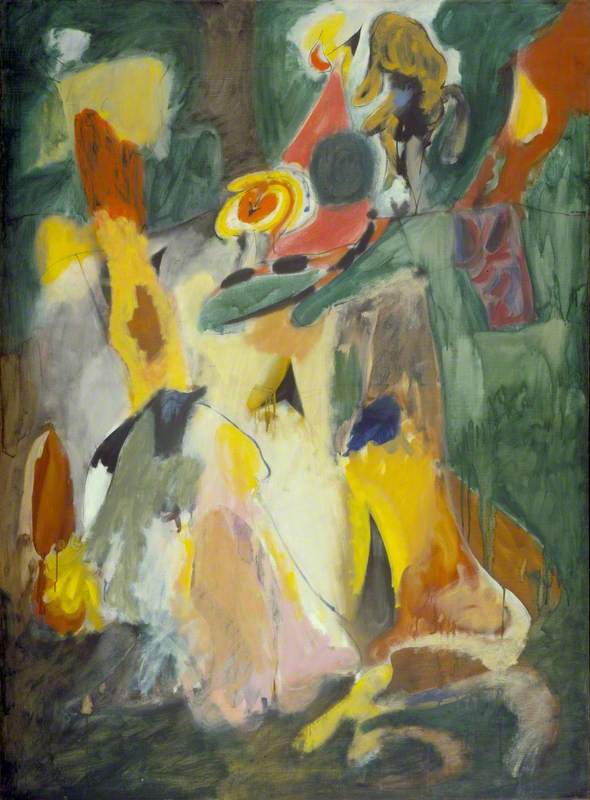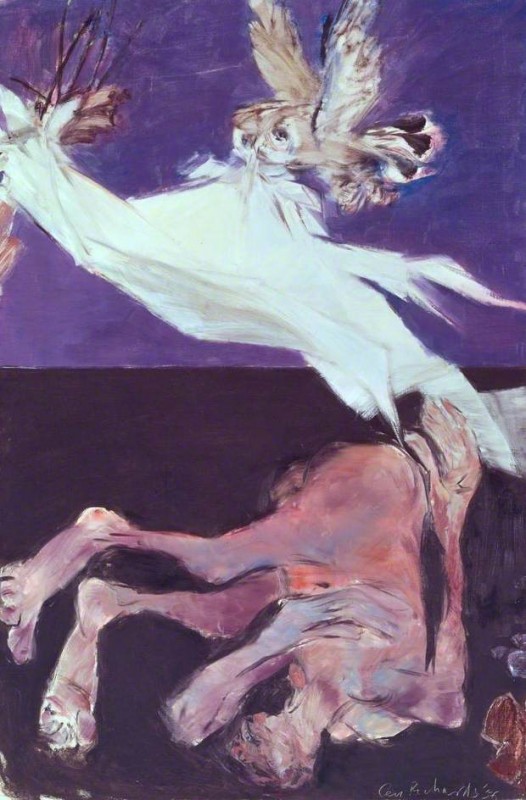(b Khorkom, 15 Apr. ?1904; d Sherman, Conn., 21 July 1948). American painter, born in Turkish Armenia, who formed a link between European Surrealism and American Abstract Expressionism. He emigrated to the USA in 1920 and adopted the pseudonym Arshile Gorky, the first part of the name being derived from the Greek hero Achilles, the second part (Russ. ‘the bitter one’) from the Russian writer Maxim Gorky, to whom the painter sometimes claimed he was related (he often embroidered his past and his year of birth was perhaps earlier than the 1904 he usually claimed). In 1925 he settled in New York, where he first studied and then taught at the Grand Central School of Art. Gorky took a romantic view of his vocation and is said to have hired a Hungarian violinist to play during his classes to encourage his students to put emotion into their work.
Read more
His early paintings were strongly influenced by Cézanne (whom he considered ‘the greatest artist that has lived’) and he also fell under the spell of Picasso, as can be seen both in the haunting The Artist and his Mother (c.1926–9, Whitney Mus., New York) and in his experimentation with Cubism at this period. Much of his work of the 1930s represents an attempt to synthesize the flatness of Cubist structure (in which he was influenced also by Stuart Davis) with the improvisatory fluidity and energy of Surrealist automatism. In the early 1940s he came into contact with the European Surrealists who had emigrated to New York to escape the Second World War and under their influence (particularly that of Matta and Miró) he created the distinctive style of his last phase, featuring delicately drawn shapes, suggestive of living organisms, floating in brilliant colour. However, just as Gorky began to emerge as a powerful original voice in American art, he suffered a tragic series of misfortunes. In 1946 a fire in his Connecticut studio destroyed a large proportion of his recent work, and in the same year he was operated on for cancer. In 1948 he broke his neck in an automobile accident, and when his wife left him soon afterwards he hanged himself, leaving a message chalked nearby reading ‘Goodbye my Loveds’. Gorky has been called both the last of the great Surrealists and the first of the Abstract Expressionists, and his work in the 1940s was a potent factor underlying the emergence of a specifically American school of abstract art. He was particularly influential on his friend de Kooning.
Text source: The Oxford Dictionary of Art and Artists (Oxford University Press)

